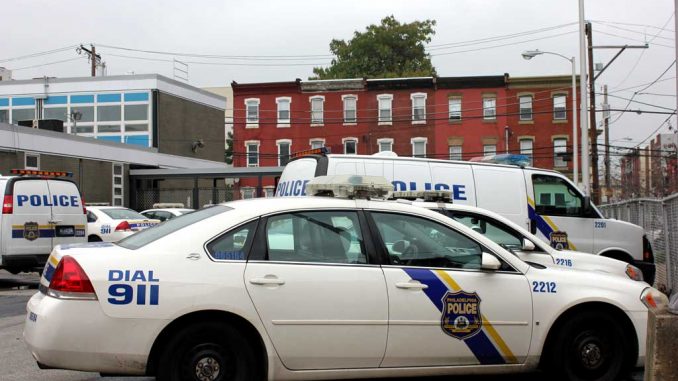

A recently released university report shows a nearly 30 percent drop in reported crimes on Main Campus and in surrounding neighborhoods. But the added security didn’t come cheap.
Deputy Director of Campus Safety Services Charlie Leone credited an extensive $2 million CSS initiative launched early last year as the biggest reason for the decline.
The plan largely relied on bringing in increased security patrols from the Philadelphia Police Department, AlliedBarton security contractors and Temple’s own police force.
A federally mandated annual security and fire report released by the university on Sept. 28 shows there were 91 crimes reported on or near Main Campus by students, staff and visitors in 2010, and 61 in 2011. The cost then comes to roughly $66,600 per additional crime prevented. The incidents recorded fall under Cleary Act reporting requirements, which cover serious offenses such as murders, robberies, assaults and sexual violations.
Daniel Carter, director of the 32 National Campus Safety Index in Centreville, Va., points to the success of the significant, costly security improvements made at the University of Pennsylvania’s campus a decade ago as an example of what Temple may be able to replicate in North Philadelphia.
“Temple’s location in an urban environment warrants a greater investment in physical security, also known as target hardening, than institutions in other environments may need,” Carter said. “It is probably best to look at a cost benefit analysis over a period of many years. Once [measures are] in place you may not see continued year-to-year declines at a high rate, but that does not mean the crimes are not being prevented.”
Assistant Vice President of University Communications Ray Betzner, had a son who attended Virginia Tech during the 2007 massacre that left 32 dead. He notes a trend among universities across the nation, both urban and rural, investing more in security.
The CSS plan placed a distinct focus on the blocks west of Broad Street where an “explosion” of development brought in an estimated 4,000 more student residents throughout the past three years, Leone said.
The annual security report also shows a corresponding rise in crimes committed on public property, from 33 in 2009 to 61 in 2010, the year before the initiative was enacted.
“We started seeing an increase in crime, an uptick every time, every year as we see more and more students around the campus,” Leone said. “We said, ‘Hey, we got to do something.’ We realized we needed more resources to do that.”
High risk areas sometimes saw upward of a 50 percent increase in patrols, Leone added, while the average increases of Philadelphia Police and AlliedBarton patrols hovered around 30 and 25 percent, respectively.
The CSS initiative also sought to optimize existing security measures. Roving bike cops replaced many of the university’s stationary security kiosks, which could only cover a block in any direction, and additional security cameras were installed throughout Main Campus.
But even with more police strolling down Cecil B. Moore Avenue and neon green clad security officers rolling along on Fuji mountain bikes, theft and violence remain very much a reality in the North Philadelphia streets surrounding Main Campus.
An off-duty police officer was slain during a holdup just blocks from much of the recent student housing developments less than two weeks before the first day of classes, and a Sept. 19 shooting emptied subway cars at the Susquehanna-Dauphin Broad Street Line station.
Joseph Chism, a junior international business major, lives among the targeted blocks just west of Main Campus.
“It’s a big thing as a Temple student living off-campus to know when and where to go and not to go certain places,” he said.
He added that although he takes precautions, he seldom feels in danger.
“Every other block you’ll see a cop,” Chism said.
Jad Sleiman can be reached at jad.sleiman@temple.edu.


Be the first to comment